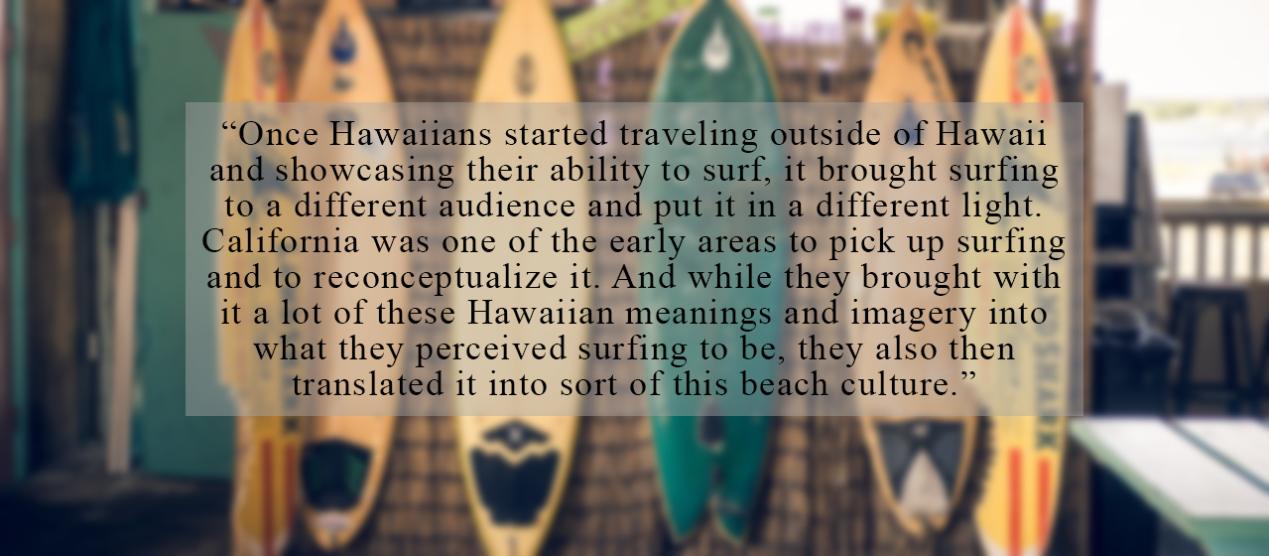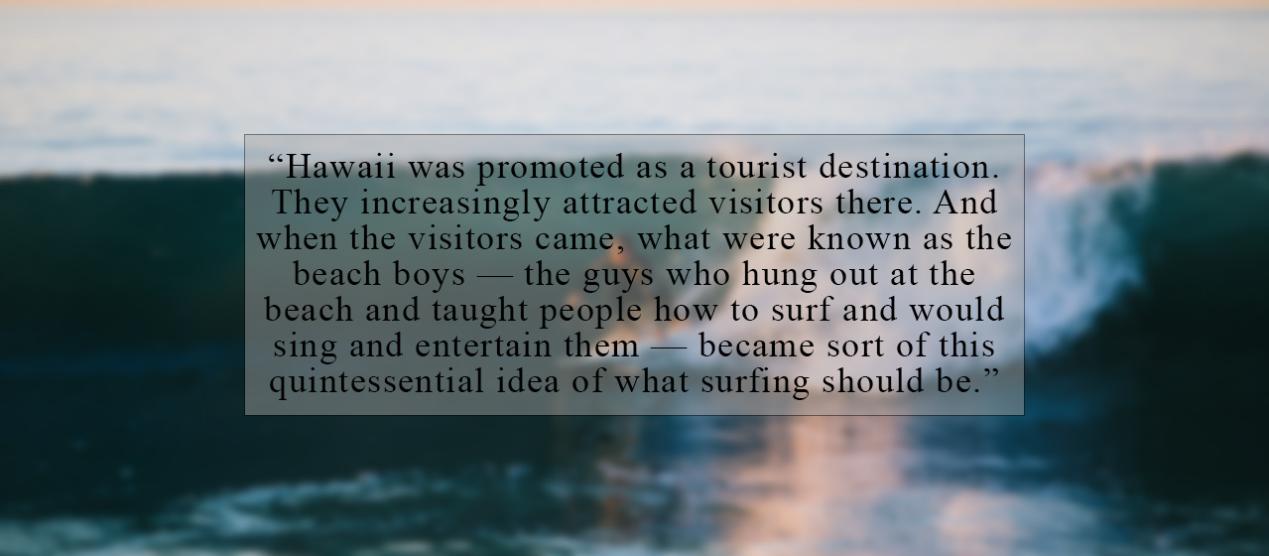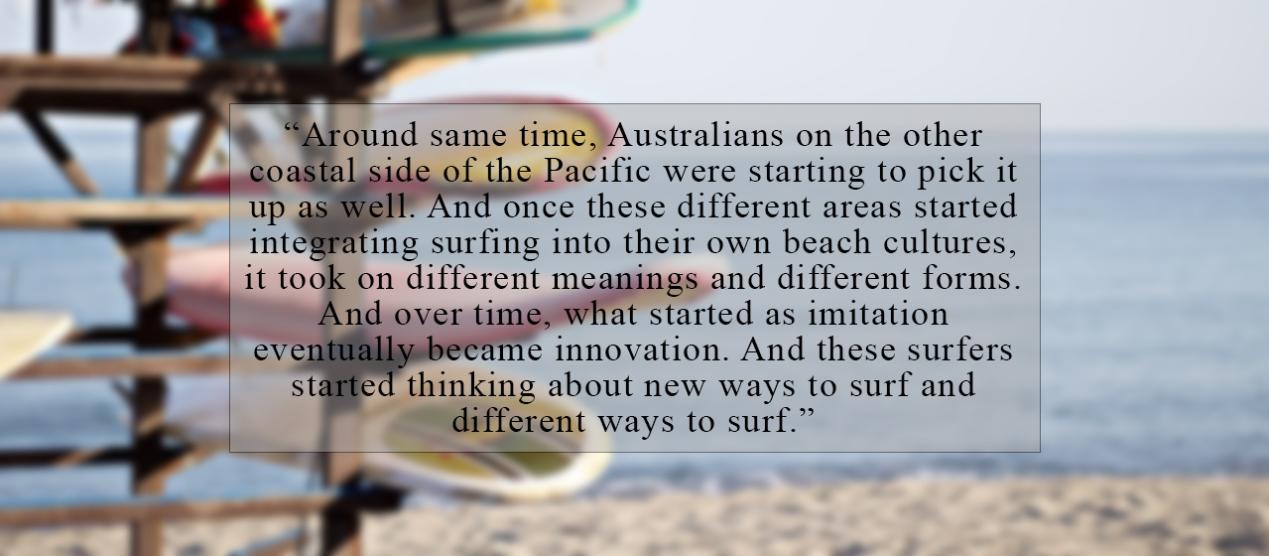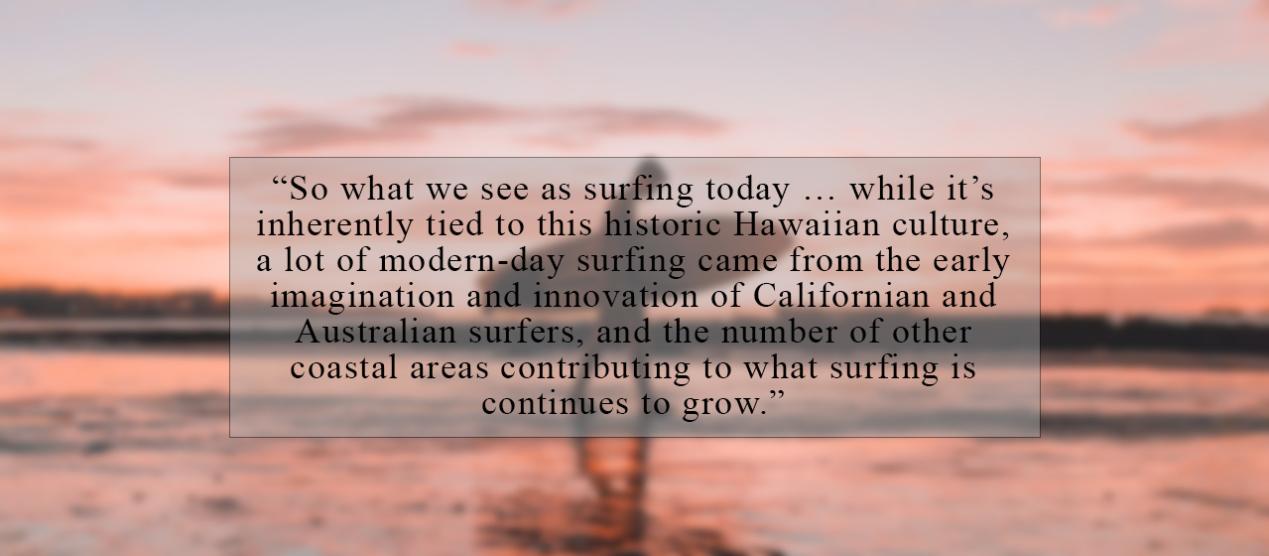Can you give us a sense of what surfing means in Hawaii and to Hawaiians?
In Hawaii specifically … it’s an integral part of the local culture, even if you don’t surf. Originally and historically, it had a lot to do with the daily lives and religious beliefs of Hawaiians and probably in the Polynesian area as well. But when the explorers and missionaries came with alternative beliefs and lifestyles, it shifted the way people perceived surfing and separated it in some ways from its original cultural context.
These missionaries and voyagers, who traveled many, many miles across the ocean, often saw water as a dangerous element. The Hawaiians saw water as part of who they were and part of the land they protected and cared for. In part of the paper, we talk about even crafting a surfboard. It wasn’t like just cutting down a tree. It became a ritual in which this natural object was transformed into a useful tool. But for that to occur, there were a lot of ritualistic elements about caring for and representing this material artifact in a way that was more loving. I don’t know if that’s the right word, but they were more respectful of these natural elements in a lot of ways.
How does this research tie into your work at the Daniels College of Business?
I have always been really fascinated at how markets enable this type of value to be created. So while surfing is inherently this cultural ancient practice, the ability for it to spread globally and to be recognized as an elite sport is a function of the market factors at play — the ability for us to buy a surfboard, to create an entire apparel industry around this particular sport or this lifestyle. Creating a global lifestyle around surfing is funneled through the market.
[Surfing] would not occur — and it could not occur at this level of scale — if it weren’t for the suppliers and the retailers and the surfboard shapers and contest promoters, as well as the clothing designers, the magazines, the movies, the music, all of these pieces are all tied to the market. And I think if we look at the markets in that way, we can see a lot more value being created than these transactional exchanges where I’m buying a T-shirt for $20.
Your latest paper is all about how surfing has become adapted and valued all over the world — a process called “practice diffusion.” Can you explain that concept a bit more?
Our main question for this paper is: How does a practice diffuse? How does it spread? We know that it’s not just because a surfboard lands ashore someplace and all of a sudden people are surfing. And we know that it’s not just [people seeing] an image and all of a sudden people are surfing. So what are the real components and processes that enable a practice like surfing to emerge, especially in a place where it’s unlikely, like Bangladesh? Or in coastal areas that have religious beliefs that may actually be counter to playing in the water?
Materials, meanings and competencies are the basis of any of these practices. These elements can move on their own, but practices don’t because practices are actually embedded in our society. So in order for me to really understand what surfing is, I have to have some frame of reference as to what being in the water means. Or I have to have some ability to understand that it is part of a subculture or part of a sport or something. Without those reference points, it’s like the Little Mermaid when she has a dinglehopper and she’s combing her hair with a fork.
She has no context for what this object is. And so in order for us to adapt a practice, like eating with a fork, we have to be able to connect it to something else that we’re doing. The material artifact is there, but without meanings and competencies the practice doesn’t exist.
What do you think are the implications of research like this for the world outside of surfing?
This idea of practice diffusion is so important across so many contexts. Not just sports and not just these intricate complex processes, but things like getting vaccinated, wearing a mask and voting, as well as recycling, saving and even showing up to class. We want people to do these things, and we don’t have a good process model for thinking about how we can make that happen with less resistance. Maybe it’s not that we just keep shouting at people to do things, but we actually take the time to understand what these things that we want them to do already mean to them. And then reframe what those actions mean, and better communicate the materials and competences needed to do them in a positive way so that they will want to do it. Because if people feel compelled to do something and understand the importance of adopting a product or technology or whatever, they much more likely to do it.
What do you think is the significance of having surfing in the Olympics this year?
The big question to me was: Why hasn’t it been? There are some countercultural perspectives of surfing, but skateboarding and snowboarding are in the Olympics. So why not surfing?
Surfing is rooted in Hawaiian culture. And the cultural origins of modern-day surfing are often overlooked. Carissa Moore’s Olympic gold showcases the skill of surfers of Hawaiian decent who have passed down the practice of surfing for generations. It is incredibly significant because it raises awareness to the origins of what we know as surfing today and the value that Hawaii and its culture bring to the world.
The entrance into the Olympic games accomplishes a dream that one of surfing’s Hawaiian icons, Duke Kahanamoku, had in the early 1900s. The International Surfing Association has lobbied for surfing to be in the Olympics for many years, but it wasn’t until the organizers of the 2020 Tokyo Olympics saw surfing as an opportunity to engage a younger audience that surfing was accepted as a new sport in the Olympics.
A lot of factors are at play when it comes to what was holding it back. It might be perceptions of surfing as a legitimate sport. It might be perceptions of it as a counter-cultural or rebellious activity. But I also think it took a country, I guess, that really saw the value of this sport to bring it in, to say this is something we want to do.
What do you see as the pros and cons of surfing getting a bigger platform? It’s more exposure, but also, as I think you noted in the paper, it takes away some of the original meaning and origins of this sport.
That’s a hard question and it depends on who you ask. We interviewed a guy named Fred Hemmings who was the founder of the triple crown (a series of professional surfing events in Oahu), and he believes that surfing is Hawaii’s greatest gift to the world and that we should absolutely be recognized for it. We should be the ones who have the surfing museums and are promoting that surfing is a Hawaiian sport. But a lot of Hawaiians are not interested in promoting surfing in that way. In fact, they don’t want all of these international contests on their beaches because it takes away from their lifestyle.
So it’s a tricky balance, and this comes back to value being created. Who is it being created for? And when value is being created for one group, does that mean it’s taking away from the value of another group? Usually, probably, yes. So considering those factors in things like growth and expansion and formalization of a sport like this and recognition of it in the Olympics, is it a good thing for surfing? In some cases, yes. And in other cases, maybe not.
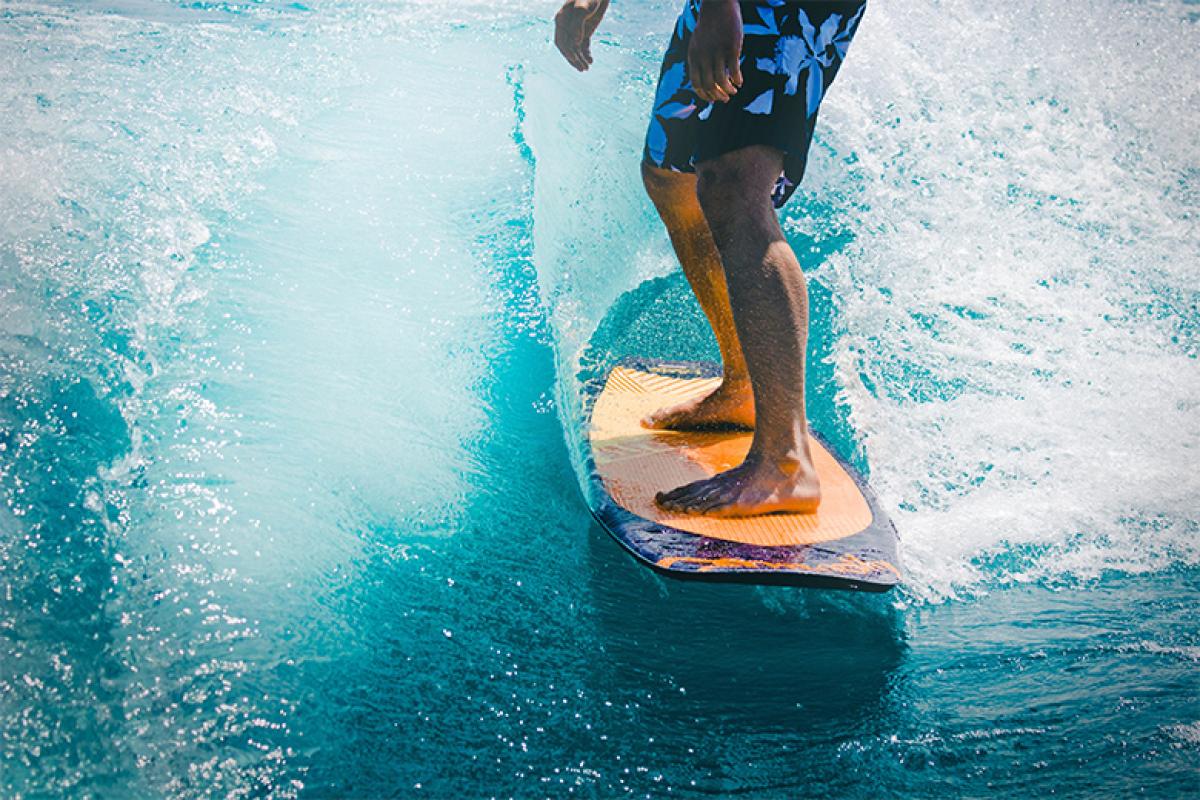










![Surfing originated as a cultural practice in Hawaii, but Hawaiians and the Polynesians were not the only ones [doing it]. It’s important to note that surfing occurred around the world along coastal areas in different forms and with different functions. A lot of times, people would use this riding the wave as a means for fishing and doing all kinds of offshore activities.](/sites/default/files/styles/unit_slide_plain/public/unit-slide-image/surfing_slide_1.jpg?itok=A1iDINHH)
![Initial visitors [to Hawaii] had negative connotations based on their religious beliefs and their attitudes toward the ocean. But eventually, other foreigners began to see this practice as something that was more adventurous and exciting, something that they actually wanted to try to do. And once it became perceived as desirable by a different group of foreigners, or the meaning transitioned over time, it started to become appealing to different audiences.](/sites/default/files/styles/unit_slide_plain/public/unit-slide-image/surfing_slide_2_revised.jpg?itok=YIdPpbNM)
